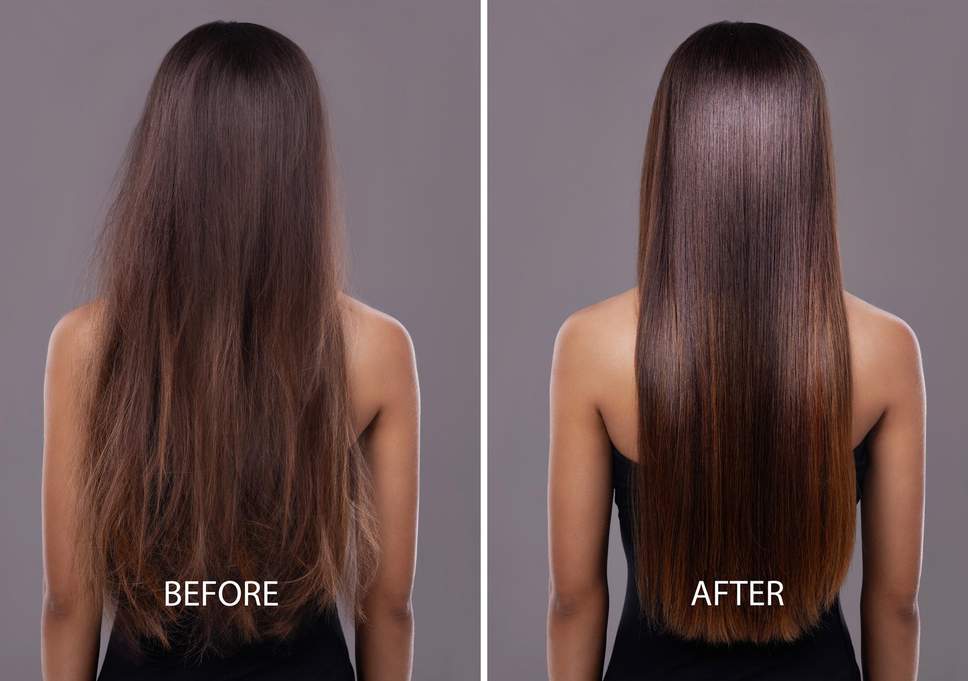The thing with very dry hair is that it requires a consistent care routine in order to remain healthy. Should you miss any steps, your locks will turn from ‘potentially brittle’ to split and broken in the span of a few days. Therefore, it’s essential to understand what your locks truly need and ensure they get it regularly. Bear in mind that this will include not only a shampoo and conditioner combo but also some dietary changes and possibly some medications.
Understanding the Main Causes of Extremely Dry Hair
The first thing you need to do in order to develop the right hair care routine for brittle dry locks is understanding the reason why they are this way. While it’s true that normal, dry, and oily skin and hair types exist, the dry and oily variations are usually a result of some issues. Simply put, your tresses might be naturally prone to retain moisture less efficiently than normal hair. However, if this situation develops to the point where your hair becomes noticeably dry (this also means it becomes brittle, dull, and lifeless) this means that you have some underlying problem that might not be resolved with using haircare products.
The most common reasons that cause severely dry hair are:
Other important factors that can cause dry hair are the environment (dry climate, frequent swimming), dietary deficiencies (especially vitamins B, A, and E) and improper care. If your health is alright and your diet contains plenty of nuts, seeds, and grains, you should focus on hair care.
There is also a matter of bleaching to consider. All bleached hair becomes dry and at constant risk of going extremely dry and damaged. This is the effect of the bleaching solution. Therefore, this type of hair requires a special routine that uses products formulated specifically for bleached blondes.
How to Care for Extremely Dry Hair and Prevent It: Step-by-Step Routine
1. Shampooing
The first and most important rule of washing dry hair is to do it as rarely as possible. At the least, you should aim for a wash every three days.
It’s also imperative that you use a shampoo formulated for your specific hair type. If you have several issues with your locks, try to find targeted formulas like Nizoral medicated products for dandruff treatment or the Fanola range for bleached locks. If your colour is silvery or platinum blonde, use a special purple shampoo that will neutralize the natural yellowing of bleach-treated hair. This product is not only mild enough not to damage extremely dry hair but also helps you reduce the frequency of bleaching, which also offers some protection to your tresses.
Note that how you wash your hair is as important as the shampoo you use. It’s essential that you keep the water temperature cool or lukewarm. You also need to be very gentle when massaging the shampoo into your scalp. Do not rub to avoid tearing and damaging strands of hair and follicles. Be mindful of your manicure. Dry hair means dry scalp, which means that your skin is thin and sensitive. Therefore, even a small scratch can get inflamed and cause big problems.
2. Conditioning
You cannot skip the conditioner in your dry hair care routine. It’s a mandatory step! In fact, you might skip shampooing and simply wash away grime off your locks with warm water or natural shampoo alternatives, but conditioning is a must.
It will also be more beneficial to use leave-in conditioners as they provide protection and hydration for longer. When you have extremely dry hair, you should use not a regular conditioner but a deep conditioning product.
3. Extra hydration
Depending on how severe your case of dry hair is, you might need to use one more product to keep it hydrated and protected. Hair oils work the best this type of locks.
However, you need to be careful with them as oil-based products might make your hair look dirty, which means you will have to wash your locks more often. Remember that the damage from frequent washing outweighs the benefits of hair oil. Therefore, use this type of products only if you find the one that fits you perfectly.
4. Styling
The less you style dry hair the better. You should avoid heat styling altogether until you bring your locks as close to the ‘normal’ type as possible. With dry locks, you’ll need to get regular trims to remove any split ends. And you should choose a hairstyle that doesn’t require much upkeep and can look great when you air-dry your tresses.

